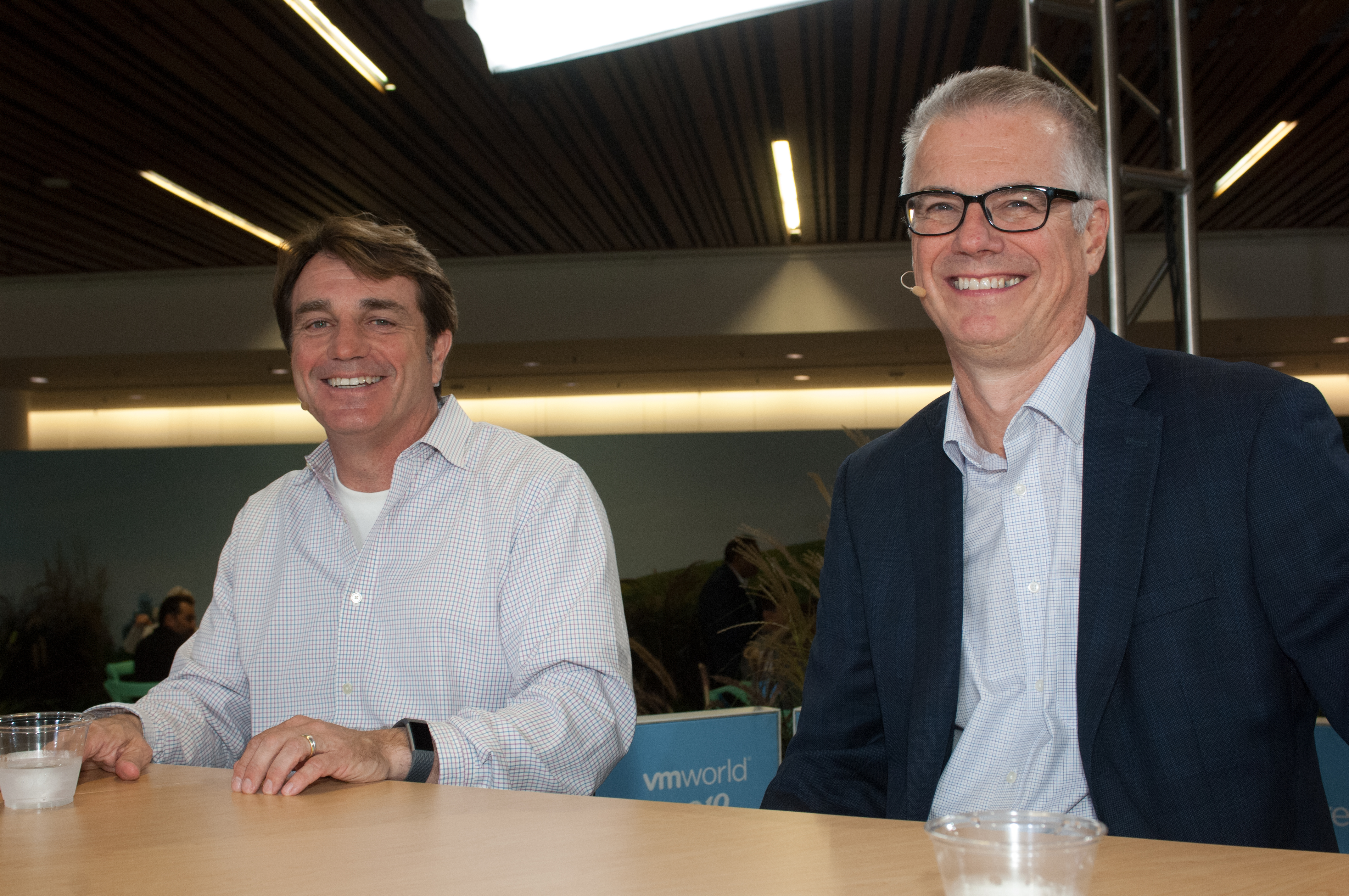 INFRA
INFRA
 INFRA
INFRA
 INFRA
INFRA
As the digital transformation marches onward, graphics processing units and virtual desktop infrastructure are becoming increasingly valued commodities in many areas of the enterprise world. Why is this?
John Fanelli (pictured, left), vice president of product for GRID at Nvidia Corp., and Kevin Gray (pictured, right), director of product marketing at Dell EMC, spoke with John Furrier (@furrier) and Stu Miniman (@stu), co-hosts of theCUBE, SiliconANGLE Media’s mobile livestreaming studio, during VMworld in San Francisco. They discussed the reasons the enterprise is embracing GPUs and VDI and new product announcements in the space (see the full interview with transcript here). (* Disclosure below.)
[Editor’s note: The following has been condensed for clarity.]
Furrier: GPUs are in high demand. Talk about how that’s changed, how people think about it, and how it’s impacted traditional enterprise.
Fanelli: From a data analytics perspective, the data scientists will ingest data, they’ll run some machine learning on it, they’ll create an inference model that they run to drive predictive business decisions. What we’ve done is we’ve GPU-accelerated the key libraries, the technologies … to use a GPU. Workflow is … they’ll start small, and then they’ll do bigger models, and eventually they want to train that scale.
So … they want to move to the cloud so they can have hundreds or thousands of GPUs. Nvidia and VMware are bringing [Nvidia’s] Virtual Compute Server to VMware Cloud running on AWS with our T4 GPUs. So now I can scale virtually starting with fractional GPU, to single GPU, to multi GPU, and push a button with HCX and move it directly into AWS T4 accelerated cloud.
Miniman: Bring us up to date. I remember in 2010 … [tech companies were] all claiming who had the lowest dollar per desktop as to what they were doing in VDI. It’s a way different discussion here in 2019.
Fanelli: In the VDI environment as you move to Windows 10, you may not be aware of this, but from Windows 7 to Windows 10, it uses 50% more CPU, and you don’t even get that great of a user experience. You pop a GPU in there, and you’re good. Most of our customers together are working on a five-year life cycle. That means over the next five years, they’re going to get 10 updates of Windows 10, and they’re going to get like 60 updates of the Office applications. That means that they want to be future-proof now by putting the GPUs in to guarantee a great user experience.
Furrier: Any other data you guys have to share that you think is notable around how all this is coming together working from user experience around Windows and VDI?
Fanelli: We’re seeing a lot of migration to Windows 10. Customers are buying our joint solution from Dell, which includes our hardware and software. They’re buying that five-year life cycle, so we actually put a program in place to really drive down the cost. It’s literally like $3 per month to have a GPU-accelerated virtual desktop. It’s a really great value for the customers besides the great productivity.
Gray: If you look at doing some of these workloads on-premises, some of the costs can come down. When you talk about the whole hybrid cloud, multicloud strategy, there’s pluses and minuses to both. Certainly, if we look at some of the ability to start small and scale out, whether you’re going HCI or you’re going CI, I think there’s a VDI solution there that can really drive the economics.
Watch the complete video interview below, and be sure to check out more of SiliconANGLE’s and theCUBE’s coverage of the VMworld event. (* Disclosure: Dell Technologies Inc. sponsored this segment of theCUBE. Neither Dell nor other sponsors have editorial control over content on theCUBE or SiliconANGLE.)
THANK YOU